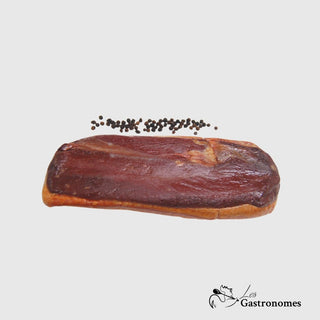Cooking duck comes down to two things: rendering the fat, and achieving crispy skin!
A whole roast duck is as satisfying to eat as it is pretty on the table; while foie gras is a rich man's food and confit is pure comfort, a delicious seared and crispy-skinned duck breast is one of the real luxuries of eating.
Duck is versatile, but peculiar to cook. And when something is unusual, people tend to keep it at an arm's distance. No matter which cut you're preparing, cooking duck comes down to two things: rendering off the fat and getting the skin crispy.
Take a duck magret (breast) for example: 'Sautéing' a duck breast is the complete opposite of anything you have ever learned about 'sautéing'. Start with a cold pan, low heat, and don’t coat the pan with oil. Even crazier: Cut a cross-hatch pattern into the fat and let it render out.
This is all easy to do once you see how it is done -- and besides, it is high time to embrace duck, show it some love, and start a life-long affair at the table.
Save all of your rendered duck fat. Strain it into a jar and refrigerate it until you want to sauté some potatoes with garlic and parsley.
Duck cooked to rare will be too chewy, but a perfect medium rare/medium will render you speechless upon your first bite. It's official: Duck is the new steak!.
Duck is a lean meat, and an excellent source of protein. Protein keeps us healthy by building and repairing our muscles, skin and blood. Duck meat is an excellent source of iron, providing 50% of the iron we need in a day. Iron helps make healthy blood that flows through our bodies, giving us energy and making us grow!






